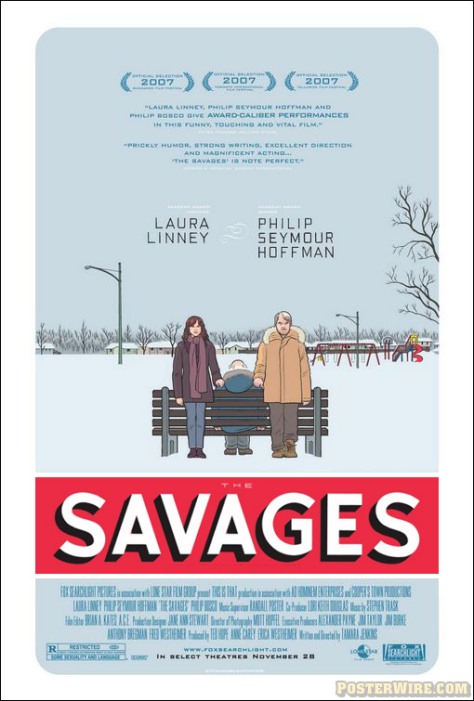Managed to get tickets to Tisch Asia‘s exclusive screening of Happiness and Q&A with director Todd Solondz.
Solondz was here for a week to mentor the Tisch students. Naturally his work was shown (at the Tisch Open House we saw a little stand outside their screening theatre advertising Welcome to the Dollhouse), and Tisch kept Happiness for the final screening at The Picturehouse.
Solondz really looks geeky. Balding, with graying hair and a paunch. That evening he wore a short-sleeved light blue shirt paired with khakis. Most memorable were the pale yellow Chucks Taylors on his feet, the oversized thick plastic glasses on his face, and the plastic bag all the way from NYC’s The Strand bookshop in his hand — Woody Allen as if he’d come of age in the 90’s.
Solondz was good-humoured and self-effacing. The harshest thing he said was an oblique remark concerning a student’s decision to shoot an experimental film here – why spend so much time and money to come here in the first place?
Filmmakers needed to be observant — “everything is material.” His life wasn’t any more interesting than anyone else’s. No traumatic past either. Singapore was extremely interesting to him as an outsider, and he saw lots that that Singaporeans tended to tune out or ignore.
Solondz commented that he was fortunate to have gotten this movie made. An actor’s union (sorry couldn’t catch the acronym) had cautioned against the script, probably because of the paedophilia and child rape references.
Luckily, Solondz was popular after the unexpected success of Welcome to the Dollhouse. He managed to get the backing of a senior studio exec, and knew that this was pretty much the only chance he would have to get Happiness made.
Solondz’s direction was minimal. He concentrated on setting the “atmosphere” and let the actors do their work. Solondz also noted that he didn’t have a problem with the child actors. Natually their parents were involved from the start, but the kids seemed to understand, in their own way, what was going on in the script.
For example, in the scene where the rapist confesses his actions to his son, Solondz didn’t ask the child actor to cry, but somehow that emerged through the takes, as both actors played off each other (consciously or otherwise). Solondz had great footage, but unfortunately discovered in the lab that it was unusable. He had to reshoot the scene 2 weeks after.
Solondz also expressed a preference for writing and editing to directing. To him editing was like writing but with footage.
About the movie
Solondz’s good at scripting awkward situations based on everyday encounters, highlighting the little lies people tell each other everyday to get by. Clever, sharp dialogue but characterisation spotty e.g. Trish, Helen characters are caricatures.
He also expounds a cynical view of love, sex and inter-personal communication. Sincere bonds are few and don’t last long.
What’s I particularly like about it are the strong performances from overlooked actors, especially Dylan Baker. Some of the actors have gone on to do well in TV (e.g. Lara Flynn Boyle, Camryn Manheim). Seymour Philip Hoffman’s the only one who eventually made the A-list after Capote, years after. And the trivia nut in me wants to point out Ben Gazzara who starred in Saint Jack.
—–
Incidentally, is Hoffman the only actor to appear on two movie poster drawn by comic book artists? Hoffman is prominent in the poster for Happiness, illustrated by Daniel Clowes (Ghost World), and he appears on the poster for The Savages (earlier post)



